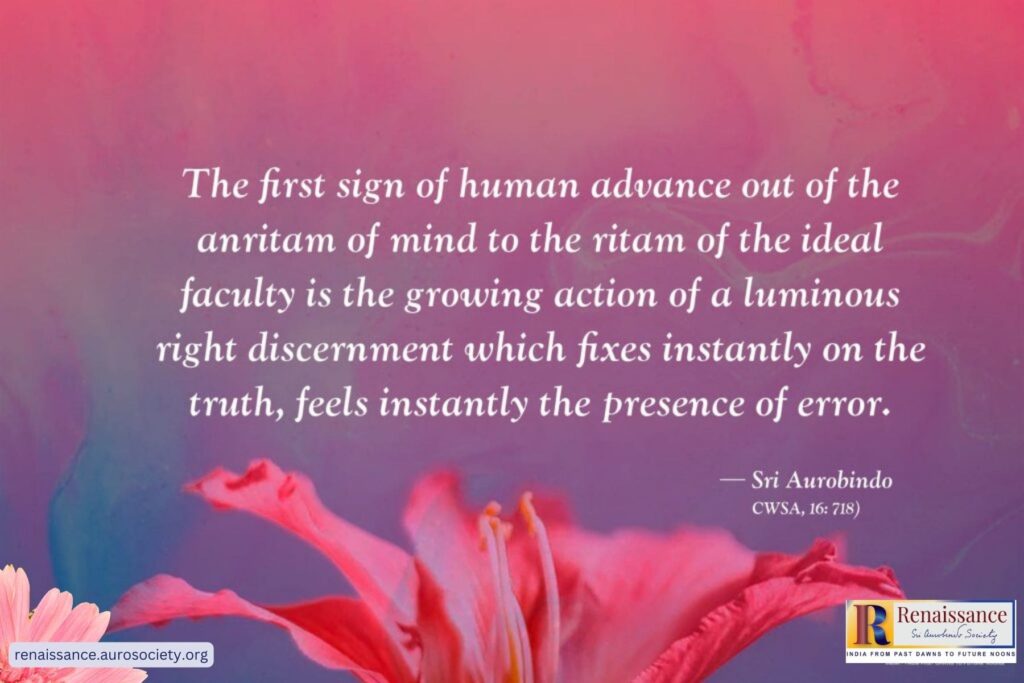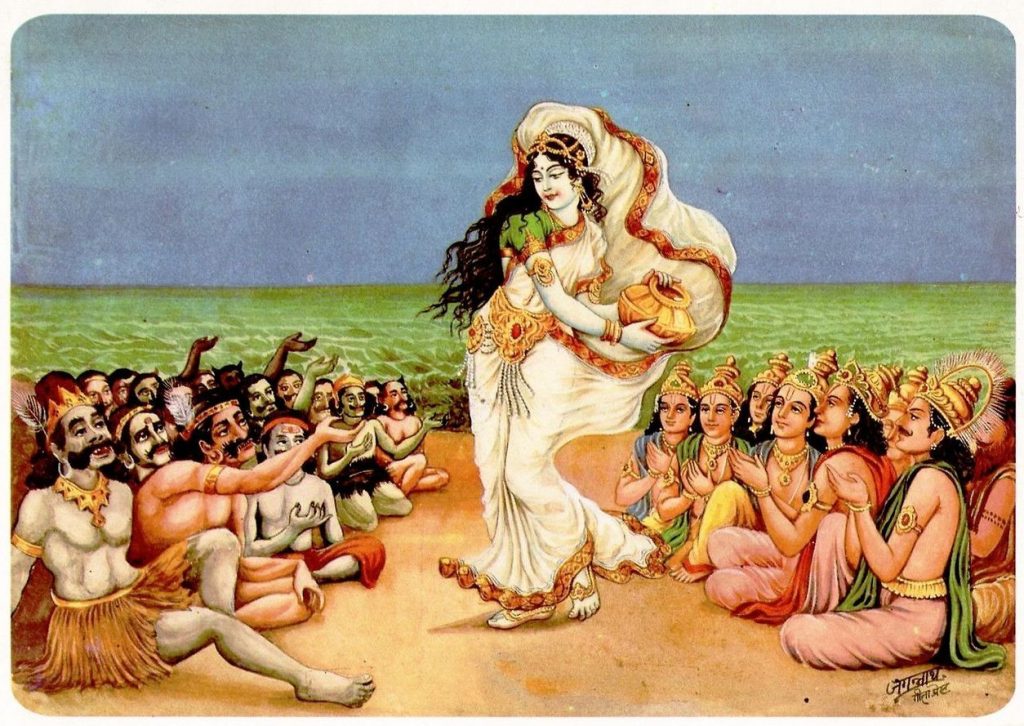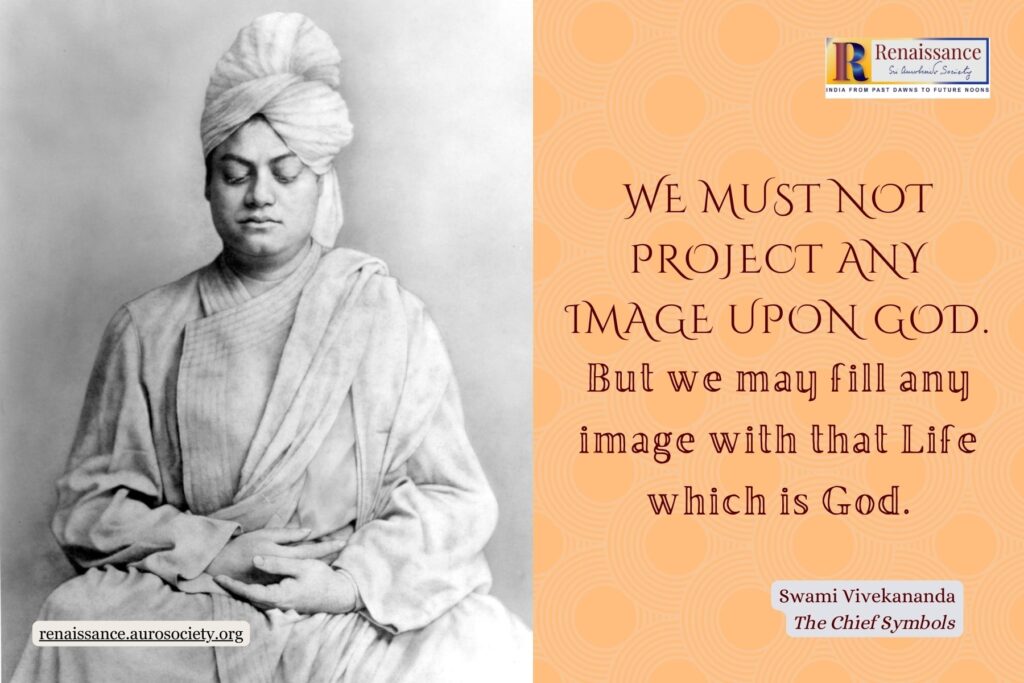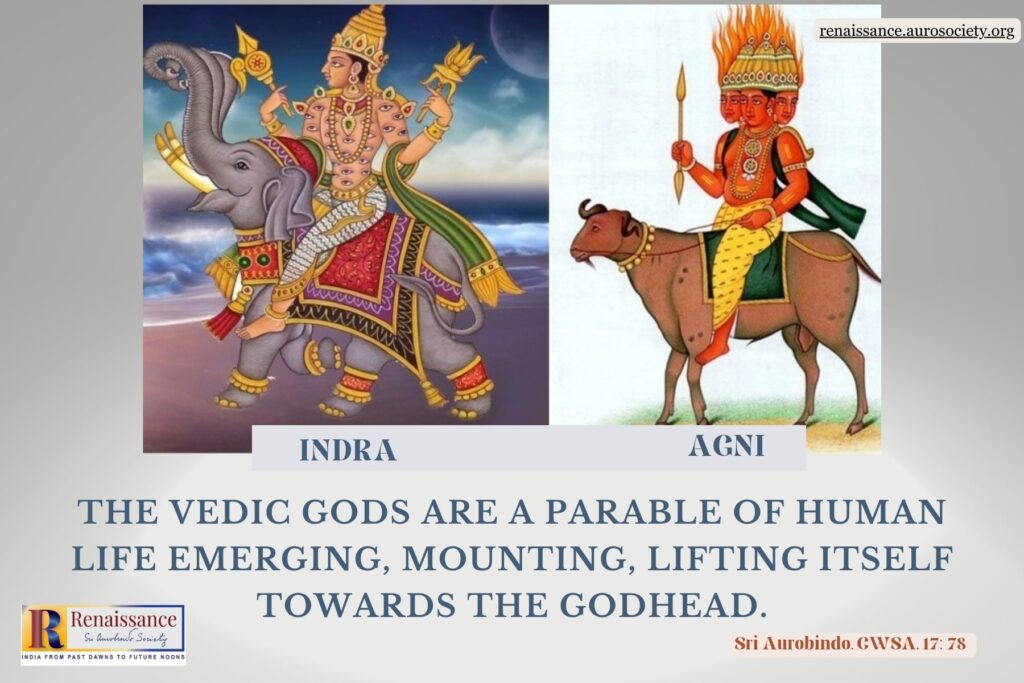Editor’s Note: Most Indians are familiar with the story of samudra-manthan, the churning of the ocean, a cosmic event in which the devas and asuras collaborated in their shared quest for amrita, nectar of immortality. But why did only the devas get the amrita? Does it have something to do with their keen sense of discernment, their viveka-shakti? We have a young aspirant retelling the story for us. But before we get to his story, let us meditate a bit on what is viveka in its essence.
According to Sri Aurobindo, when man is rising out of the limited and error-besieged mental principle, the faculty most useful and most indispensable for him is viveka, which helps him distinguish between various truths and separate truth from the falsehood.
In a long passage, in his Vedic writings, he carefully explains the purpose of viveka or the faculty of discernment, and its relation to other faculties such as revelation, inspiration, and intuition. We present below the passage in a slightly reorganised way for greater readability.
“Vijnana, true ideation, called ritam, truth or vedas, knowledge in the Vedas, acts in human mind by four separate functions;
- revelation, termed drishti, sight;
- inspiration termed sruti, hearing;
- and the two faculties of discernment,… intuition, termed ketu,
- and discrimination, termed daksha, division, or viveka, separation.
- By drishti we see ourselves the truth face to face, in its own form, nature or self-existence;
- by sruti we hear the name, sound or word by which the truth is expressed & immediately suggested to the knowledge;
- by ketu we distinguish a truth presented to us behind a veil whether of result or process, as Newton discovered the law of gravitation hidden behind the fall of the apple;
- by viveka we distinguish between various truths and are able to put them in their right place, order and relation to each other, or, if presented with mingled truth & error, separate the truth from the falsehood.”
… Drishti of Vijnana transmuted into terms of mind has become observation, sruti appears as imagination, intuition as intelligent perception, viveka as reasoning & intellectual judgment and all of these are liable to the constant touch of error. Human buddhi, intellect, is a distorted shadow of the true ideative faculties.
As we return from these shadows to their ideal substance viveka or daksha must be our constant companion; for viveka alone can get rid of the habit of mental error, prevent observation being replaced by false illumination, imagination by false inspiration, intelligence by false intuition, judgment & reason by false discernment.
(CWSA, 16: 717-718)



Now the story!
Viveka is the power to distinguish true knowledge from appearances. Like all things in the universe, it too is a Shakti. The human psychological complex is heavily conditioned – socially, biologically, psychologically. It views the world through coloured lenses.
The most fundamental conditioning that creates allure and deludes the mind is of Reputation and Form, Nāma and Rupa. Nāma is not just the name but the entire complex of associations a name carries with it. For example, Apple is not just a brand but a whole set of psychological and social associations.
Viveka is the Shakti that helps one pierce through and beyond this Nāma Rupa and perceive the essential tattvam underlying these superimposed realities. Like an arrow that Ramachandra shot through the seven sāl trees, Viveka Shakti pierces the thickest of the psychological and existential conditionings to reveal things as they indeed are.
Think of the Macbook you aspire to buy or the Ivy League University you aspire to attend. What is it that makes them so alluring to you? It is a Macbook, not just any other laptop. Its Apple not any other manufacturer. Reputation, Nāma, Rupa – the form, its perfect edges and impeccable packaging – it doesn’t belong to this world you think, it’s a rock from outer space.
Pierce through the Form and Reputation and you begin to see it as it is. With vidyā you understand the nature of the device, its engineering, OS, UX and so on, you begin to see the underlying reality. And this enables you to make appropriate choices.
Conditioning by Nāma Rupa, creates moha – allure towards certain objects which in turn creates trishnā, intense psychological thirst.

The story of Mohini Avatār illustrates this reality deeply.
Turn your mind to the kathā of the Samudra Manthana, where the devas and the asuras are churning the ocean in the quest for amrita, nectar of immortality. When after many travails and many wondrous occurrences, amrita is finally obtained, the asuras ask for their share of that which confers immortality.
Sriman Nārayana takes the Mohini Avatār and needless to say, the asuras are enamoured and completely lose themselves to Her beauty. They are enchanted by her, and smṛtibhramsha, delusion happens in their psychological complex, followed by intense trishnā.
The asuras saw and were enamoured by the Nāma Rupa, the Mohini who overwhelmed their senses, created moha followed by trishnā that completely took over their psychological complexes. They did not have the viveka to see beyond the nāma-rupa and see the Nārayana tattvam. And therefore, they were consigned to mrityu.
The devas on the other hand, could see the Nārayana tattvam and, therefore the form did not delude them. And because they recognised the tattvam and not the moha, they received amrita and attained immortality.
Moha is indeed the Yogamāya/Vishnumāya of Sriman Nārayana which deludes the entire creation.
At the fundamental level, she makes the individual purusha identify with the trigunya prakriti – this psychological and physical complex and the jagat. This sets the play of nāma-rupa which sets rolling an endless cycle of karma and karmaphala, cause and effect, cause and effect, cause and effect. Delusion producing action which produces more delusion.
While the form of Mohini Herself is not delusional, only those of asuric prakriti are deluded by Her form because of complete identification with their ego-complex. Viveka, which again is His kripā, enables us to separate nitya from anitya, the tattvam from the prakriti and through that, see Sriman Nārayana behind the alluring Mohini form that he takes as the trigunya prakriti which ensnares and deludes us.
Through Viveka, one gradually frees oneself of complete identification with the body-mind complex, and with sādhanā and Divine Grace grows in jnāna and bhakti and finally arrives at separation of purusha from the prakriti. This purusha, when separated, naturally looks upwards in aspiration towards the Purushottama.
May He, through Her grace, grant us this Vivekam.
Read More Tales and Stories
~


